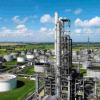|
|
Maximum Upstream Pressure Of The Valve
Started by SeanK, May 03 2009 09:23 AM
11 replies to this topic
Share this topic:
#1

Posted 03 May 2009 - 09:23 AM
Hi
I would like to know what is the maximum upstream pressure of the Valve which is connected to the pump discharge with a maximum discharge pressure of 50psig, is it the same as the max. discharge pressure and also what about the pump maximum pressure if my max suction pressure is 29 psig and max discharge pressure as 50 psig
please let me know how to calculate the above parameters
Regards
Sean
I would like to know what is the maximum upstream pressure of the Valve which is connected to the pump discharge with a maximum discharge pressure of 50psig, is it the same as the max. discharge pressure and also what about the pump maximum pressure if my max suction pressure is 29 psig and max discharge pressure as 50 psig
please let me know how to calculate the above parameters
Regards
Sean
#2

Posted 03 May 2009 - 09:58 AM
Sean,
Your question is puzzling and makes no sense. The term commonly used for discharge pressure is 'rated' discharge pressure. This term corresponds to the rated flow of the pump for the given impeller size. If I assume that 50 psig is your rated discharge pressure than the pressure upstream of the valve is 50 psig minus the pressure drop due to friction for the rated flow upto the valve inlet.
Are you confusing the term shut-off pressure with the maximum discharge pressure? Beacuse if you are and if 50 psig is your shut-off pressure, then the pressure at the upstream of the valve will be 50 psig minus the static head if the valve is located at a reference height above the pump discharge nozzle centerline and 50 psig plus the static head if the valve is located at a reference height below the pump discharge nozzle centerline.
Please clarify what you refer to as maximum discharge pressure.
Regards,
Ankur.
#3

Posted 04 May 2009 - 01:25 PM
Dear Sean Hello/Good Night,
As ankur has very accurately explained, pumps are machines adding a pressure differential over and above available from suction minus various inherent pipeline system & pump system resistances (pressure eat-ups).
Your depicted example implies as if your pump is adding around 29 psi differential.
Vagueness of your query does not permit accurate response.
Please check if the maximum discharge pressure you are referring as 50psig is correct or you have somehow mistakenly referred to the rated or design or B.E.P.(Best Efficiency Point) flow characteristic curve's pressure value.
Hope this leads you to way forward.
#4

Posted 05 May 2009 - 10:32 AM
Hi There,
If you meant the maximum pressue to be "pump shut-off pressure" then you must calculate the Pump shut-off pressure from the head curve provided by the vendor if it is an existing installation.
Read the pressure at the end of the curve at zero flow and add the maximum suction pressure to get the shut-off pressure. The maximum suction pressure is operating pressue + static head (based on high liquid level) + (psv set pressure X 10 % acculumation) - friction loss in the suction piping from the vessel to the pump suction flange.
Hope this helps
ARAZA
If you meant the maximum pressue to be "pump shut-off pressure" then you must calculate the Pump shut-off pressure from the head curve provided by the vendor if it is an existing installation.
Read the pressure at the end of the curve at zero flow and add the maximum suction pressure to get the shut-off pressure. The maximum suction pressure is operating pressue + static head (based on high liquid level) + (psv set pressure X 10 % acculumation) - friction loss in the suction piping from the vessel to the pump suction flange.
Hope this helps
ARAZA
#5

Posted 05 May 2009 - 10:44 AM
Hi Ankur/Qalander/Araza
Thank you for your explanations for my query
Actually i am preparing instrument datasheet for a pump downstream valve, in that datasheet i have found a column - pump maximum pressure to be filled by me.
But i don't have pump curves, so my question is how would i know the pump max. pressure
is the shutoff pressure is the pump maximum pressure
Regards
SEAN
Thank you for your explanations for my query
Actually i am preparing instrument datasheet for a pump downstream valve, in that datasheet i have found a column - pump maximum pressure to be filled by me.
But i don't have pump curves, so my question is how would i know the pump max. pressure
is the shutoff pressure is the pump maximum pressure
Regards
SEAN
#6

Posted 05 May 2009 - 01:08 PM
QUOTE (SeanK @ May 5 2009, 07:44 AM) <{POST_SNAPBACK}>
Actually i am preparing instrument datasheet for a pump downstream valve, in that datasheet i have found a column - pump maximum pressure to be filled by me.
But i don't have pump curves, so my question is how would i know the pump max. pressure
is the shutoff pressure is the pump maximum pressure
But i don't have pump curves, so my question is how would i know the pump max. pressure
is the shutoff pressure is the pump maximum pressure
Sean,
I would say you're overthinking the problem. I take it that you're a young process engineer and you've been assigned to complete the process portion of instrument data sheets. You supply a maximum pressure so that the instrument vendor doesn't supply something that can't withstand the maximum expected operating pressure. Normally any instruments in service can withstand a MUCH higher pressure than they are ever likely to see, but you still fill this field out to avoid an unpleasant surprise. Don't worry about getting four significant figures here. Just conservatively estimate what is likely to be the maximum pressure you're likely to experience and go with that. Only if you have an unusual situation where you're near a breakpoint and may need to select a significantly more expensive instrument is any more thought into the matter warranted. And yes, I would take the pump's maximum suction pressure plus its shutoff head to get the maximum discharge pressure. Not as quick an answer as "shutoff pressure", but my description adds a bit of explaination that I think relevant and important.
#7

Posted 05 May 2009 - 11:42 PM
QUOTE (ARAZA @ May 5 2009, 10:32 AM) <{POST_SNAPBACK}>
The maximum suction pressure is operating pressue + static head (based on high liquid level) + (psv set pressure X 10 % acculumation) - friction loss in the suction piping from the vessel to the pump suction flange.
I think "operating pressure" term is additional and shall be deleted from above equation.
#8

Posted 06 May 2009 - 12:17 PM
QUOTE (SeanK @ May 5 2009, 11:44 AM) <{POST_SNAPBACK}>
Hi Ankur/Qalander/Araza
Thank you for your explanations for my query
Actually i am preparing instrument datasheet for a pump downstream valve, in that datasheet i have found a column - pump maximum pressure to be filled by me.
But i don't have pump curves, so my question is how would i know the pump max. pressure
is the shutoff pressure is the pump maximum pressure
Regards
SEAN
Thank you for your explanations for my query
Actually i am preparing instrument datasheet for a pump downstream valve, in that datasheet i have found a column - pump maximum pressure to be filled by me.
But i don't have pump curves, so my question is how would i know the pump max. pressure
is the shutoff pressure is the pump maximum pressure
Regards
SEAN
Sean,
I can understand your predicament that this is a Basic Design or FEED stage of the project.
My understanding is that the pressure your need to fill in the valve data sheet the 'Design Pressure' of the valve in question. You can tackle this in either of the two ways:
1. Specify the shut-off pressure of the pump. Don't worry if you don't have the pump curve. The shut-off pressure of a pump can be determined as follows (Shell DEP: 01.00.01.30-Gen.):
QUOTE
SOP = SP + HPS + HPO - HPD, in which
- SP = set pressure of the pressure relief device on the pump suction system (Notes A and
- HPS = hydrostatic pressure of the liquid above the pump suction (Note
- HPO = pump differential pressure at no flow and maximum pump speed and highest density as per process design (Note C)
- HPD = hydrostatic pressure of the liquid above the pump discharge
Notes:
A. In the exceptional case of the shut-off pressure condition and the relief condition having a common
cause, the relief pressure shall be taken instead of the set pressure.
B. Consideration shall be given to the designing of systems which are not liquid-full but could be filled
completely within a short period, due to low vapour volume or high pump rates, so as to withstand
pump shut-off pressure. No rules are given in this DEP for such situations. Each case shall be
studied individually and the Principal's agreement is required. As a guide, operator action can be
assumed within 30 minutes after an appropriate reliable warning that overfilling is taking place, see
API RP 521.
C. For steam turbine driven pumps and variable speed electric motor driven pumps, the maximum
possible speed at start-up and during operation of the pump shall be carefully assessed since this
can influence the design pressure considerably. Differences of more than 25% between differential
head at normal running speed and maximum running speed are not unusual.
- SP = set pressure of the pressure relief device on the pump suction system (Notes A and
- HPS = hydrostatic pressure of the liquid above the pump suction (Note
- HPO = pump differential pressure at no flow and maximum pump speed and highest density as per process design (Note C)
- HPD = hydrostatic pressure of the liquid above the pump discharge
Notes:
A. In the exceptional case of the shut-off pressure condition and the relief condition having a common
cause, the relief pressure shall be taken instead of the set pressure.
B. Consideration shall be given to the designing of systems which are not liquid-full but could be filled
completely within a short period, due to low vapour volume or high pump rates, so as to withstand
pump shut-off pressure. No rules are given in this DEP for such situations. Each case shall be
studied individually and the Principal's agreement is required. As a guide, operator action can be
assumed within 30 minutes after an appropriate reliable warning that overfilling is taking place, see
API RP 521.
C. For steam turbine driven pumps and variable speed electric motor driven pumps, the maximum
possible speed at start-up and during operation of the pump shall be carefully assessed since this
can influence the design pressure considerably. Differences of more than 25% between differential
head at normal running speed and maximum running speed are not unusual.
2. Alternatively the easier and more conservative way would be to specify the design presure or MAOP of the pump discharge line as per the discharge line pipe specification.
#9

Posted 06 May 2009 - 02:16 PM
Fallah,
Tell me, without the operating pressure how would you calculate the maximum suction pressure. You gotta take the op. pressure into account.
ARAZA
I think "operating pressure" term is additional and shall be deleted from above equation.
Tell me, without the operating pressure how would you calculate the maximum suction pressure. You gotta take the op. pressure into account.
ARAZA
QUOTE (fallah @ May 6 2009, 12:42 AM) <{POST_SNAPBACK}>
QUOTE (ARAZA @ May 5 2009, 10:32 AM) <{POST_SNAPBACK}>
The maximum suction pressure is operating pressue + static head (based on high liquid level) + (psv set pressure X 10 % acculumation) - friction loss in the suction piping from the vessel to the pump suction flange.
I think "operating pressure" term is additional and shall be deleted from above equation.
#10

Posted 07 May 2009 - 02:19 AM
QUOTE (ARAZA @ May 6 2009, 02:16 PM) <{POST_SNAPBACK}>
Fallah,
Tell me, without the operating pressure how would you calculate the maximum suction pressure. You gotta take the op. pressure into account.
ARAZA
Tell me, without the operating pressure how would you calculate the maximum suction pressure. You gotta take the op. pressure into account.
ARAZA
ARAZA
Firstly,to calculate maximum suction pressure you shall use design pressure (not operating pressure)
The maximum suction pressure is design pressue of suction vessel or (psv set pressure X 10 % acculumation)+ static head (based on high liquid level) - friction loss in the suction piping from the vessel to the pump suction flange
You can not simultaneously use design pressure and psv set pressure(or design pressure) to calculate maximum suction pressure
#11

Posted 07 May 2009 - 07:35 AM
Fallah/ Araza,
Minor correction for maximum suction pressure:
Maximum suction pressure = (PSV set pressure + 10 % accumulation) + static head (based on high liquid level) - friction loss in the suction piping from the vessel to the pump suction flange
Regards
Narendra
Minor correction for maximum suction pressure:
Maximum suction pressure = (PSV set pressure + 10 % accumulation) + static head (based on high liquid level) - friction loss in the suction piping from the vessel to the pump suction flange
Regards
Narendra
#12

Posted 07 May 2009 - 08:52 AM
Fallah,
Agreed
ARAZA
Agreed
ARAZA
Similar Topics
Distillation Column Top PressureStarted by Guest_halkeshhulk_* , 27 Jun 2025 |
|

|
||
Recommended Installation Location For "pressure High" InterlocStarted by Guest_omupei_* , 20 Jun 2025 |
|

|
||
Distillation Tower Top And Bottom Temperature And PressureStarted by Guest_student55_* , 27 Mar 2016 |
|
|
||
Level Control ValveStarted by Guest_Ilyes_* , 03 Jun 2025 |
|

|
||
Steam Pressure In Heat ExchangerStarted by Guest_mvanrijnbach_* , 15 Apr 2025 |
|

|

 FB
FB










